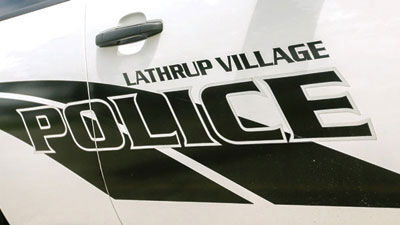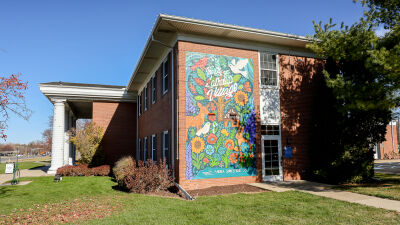SOUTHFIELD — For over 50 years, the Rouge River cleanup at Berberian Woods in Southfield has been a celebration of Southfield’s continued dedication to restoring and revitalizing the river.
“The cleanup helps protect this valuable natural resource by removing invasive species that cause impairments to habitat and wildlife in our river system – allowing the river to flow naturally and heal itself, along with affording local residential, education and business communities the opportunity to work together to improve the environment,” said Southfield Storm Water Manager Brandy Siedlaczek.
May 20 was also Rouge River Day at the Farmington Hills Nature Center. Every year since 1986, thousands of community members have participated in efforts to clean and restore the Rouge River watershed.
This year, volunteers were expected to clean debris in and around the river, remove buckthorn and other invasive species near the waterway, and help with native wildflower plantings and trail maintenance in Heritage Park.
Ashlie Smith is the supervisor of the Farmington Hills Nature Center.
“Our Rouge River Day is one of our largest volunteer days of the year,” Smith said. “We typically have a large group of volunteers. We like to see close to 100 if we can get a lot of folks out helping out the Rouge River watersheds. We’ve been doing this program quite a few years.”
She discussed the primary aspirations of the outings.
“We have a heavy focus on non-native invasive plant removal because that does take a lot (of) effort, energy and number of people to make an impact,” Smith said. “When we’re out there we focus on removing garlic mustard from some of our more sensitive habitats in the park, and without this effort and some other volunteer groups that help throughout the year, we wouldn’t have been able to have as good of a handle on the garlic mustard as we do and our more sensitive habitat areas.”
Farmington Hills resident and Nature Center volunteer Lynn Manzi has been a part of multiple outings involving Rouge River restoration efforts.
She has observed the events turn into family outings.
“People show up with their families, and their kids get involved,” Manzi said. “There’s certain things that they’ll give families and kids to do, and the kids are great at picking stuff up — they’ll pick up some … garlic mustard. … The kids are good at (it) because they got those small hands and they can go in there and get dirty. It’s great.”
As nice as it is for volunteers to see immediate evidence that their efforts are yielding positive results, sometimes it takes a while to see the payoff.
Smith used garlic mustard removal as an example.
“I would say nine, 10 years ago was really when we started seriously tracking where we were removing it and pulling it,” she said. “You really don’t start seeing efforts of pulling the plant until about seven or eight years after you start, and so now we’ve gone beyond that threshold. There’s areas of the park that used to be just completely overrun by garlic mustard, where that’s all you would see on the forest floor, and now, if I go back to check those spots on the GPS, I’m lucky if I find a few plants that could be pulled and checked on. Otherwise, those large (swaths) that we saw years ago are gone.”
Manzi enjoys seeing the difference that volunteers make.
“It’s nice to see the results, especially when you get a group of people and they’re clearing a whole area,” she said. “It’s great — nice to see that.”
Smith provided another example of the hard work of volunteers paying off.
“One of the things that we’ve seen since we’ve started to put a strong effort into removing the woody invasive plants are bluebird nesting meadows,” she said. “We started to see less birds using the boxes a few years back, so we really put a strong effort into doing some forest mowings, and we were able to get those (bluebirds) using the boxes — back up to what they were before. We have volunteers that actually come and monitor those nest boxes, so that’s how we know if they’re being used or not, and what species are using them. We have 38 boxes in the park that are monitored by volunteers, so that’s another good way for us to see, like, ‘Oh, hey, our efforts are paying off,’ or, ‘This is some work that needs to be done — these species are being affected.”
Smith explained the connection between the Rouge River and Heritage Park.
“The Rouge River meanders through Heritage Park from north to south, and it is a little ways into the park — you can get there via the river trail behind the Nature Center,” she said. “Anything that we do, the land directly impacts the water, because anytime it rains or anything like that, all that water’s rushing off the land into the river, so our efforts on land are just as important as what we could do directly in the water. So, removing those invasives, helping to protect our soil from erosion and planting native plants, all of that has a huge impact on the health of the river itself and the surrounding watershed.”
Smith is of the opinion that events such as Rouge River Day help to bring the community together.
“I get super excited to get all those things done, and it really does take that large group of people to work together to meet those goals,” she said. “For me, it’s always worth it. I look forward to Rouge River Day every year and getting those things taken care of in the spring and jump-starting that process year-after-year of, ‘OK, these are things that need to get done to improve our habitats or better the watershed,’ and that folks are motivated to come out and do that because people really do care a lot about the Rouge River.”
 Publication select ▼
Publication select ▼






















